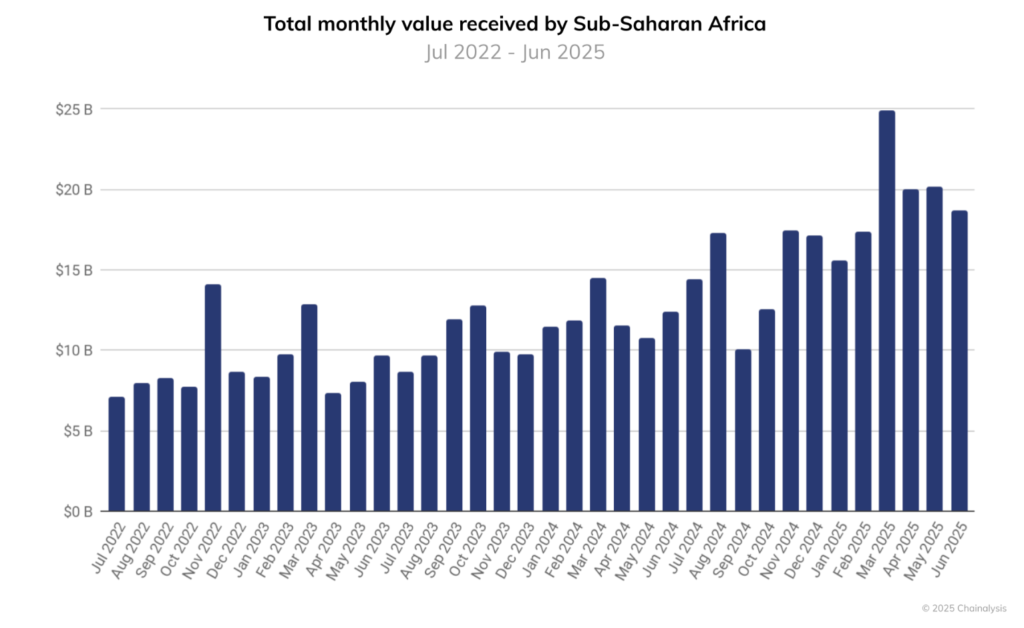Sub-Saharan Africa has emerged as the third-fastest growing region for cryptocurrency adoption.
The region is currently behind only Asia-Pacific and Latin America, according to a new report by blockchain data platform Chainalysis.
The report highlights the region’s fast-growing embrace of digital assets, particularly driven by economic challenges and innovative everyday use cases.
In fact, between July 2024 and June 2025, Sub-Saharan Africa received $205 billion in onchain cryptocurrency value.

This marks a 52% increase from the previous year, highlighting the region’s growing institutional and retail adoption.
Issues like traditional currency devaluation, limited access to traditional financial systems, and persistent inflation have further fuelled this growth.
Nigeria leads Institutional Crypto Momentum in the Sub-Saharan Africa
Nigeria is the region’s largest economy, leading institutional adoption.
The country received $92.1 billion in crypto value over the 12-month period.
The report attributes these figures to Nigeria’s dominance to its large, tech-savvy youth population and economic pressures, including inflation and restricted access to foreign currencies.
Stablecoins, pegged to the U.S. dollar, have become a popular alternative, with million-dollar transactions flowing between Africa, the Middle East, and Asia.
“Stablecoins are filling a critical gap in Nigeria, where accessing dollars is challenging,” the report noted.
Meanwhile, South Africa is carving out a robust institutional crypto market as well. Its advanced regulatory framework also helps.
Retail Adoption in the Sub-Saharan Africa
Retail crypto activity in Sub-Saharan Africa has also surged.
In fact, over 8% of all crypto transfers have taken place in the region valued at $10,000 or less, compared to just 6% globally.
This trend resembles the region’s reliance on cryptocurrencies for everyday transactions, driven by an unbanked population and the rapid devaluation of local fiat currencies.
Stablecoins account for 43% of all crypto transaction volume in the region.

